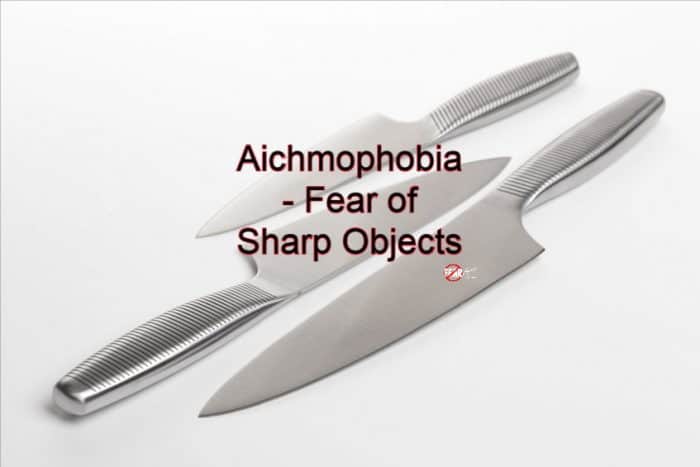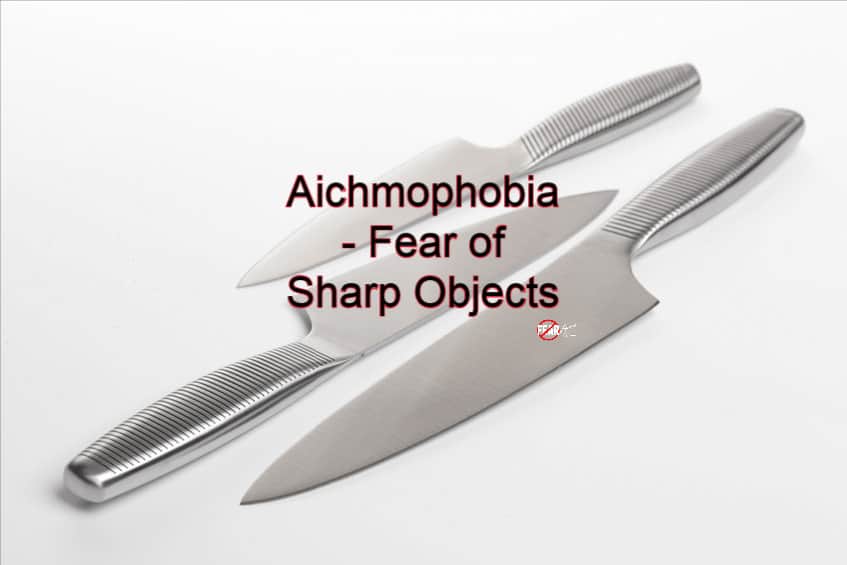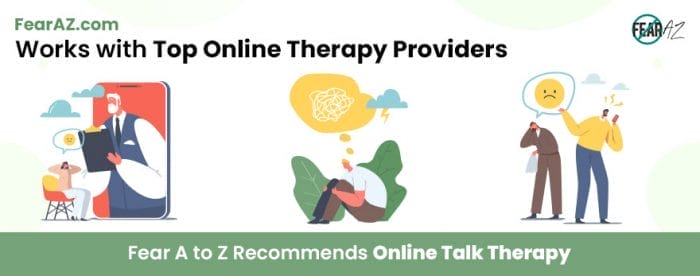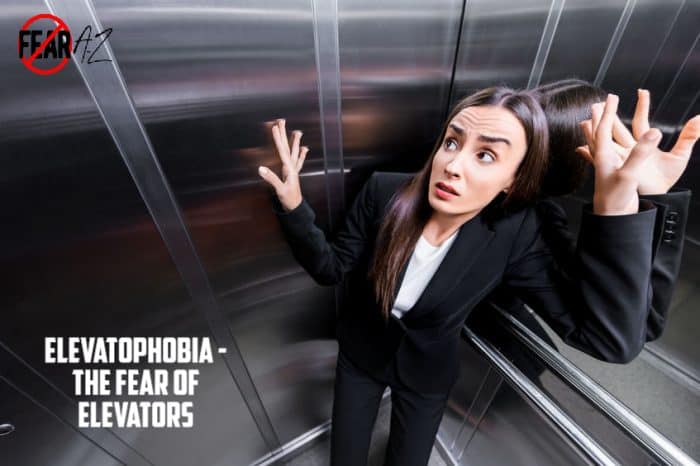Share This Article
Cutting through Aichmophobia: The Fear of Sharp Objects
Do you get anxious whenever you see a sharp object, even if you are at a safe distance from it? Do you dread the sight of kitchen or dining tables, where you may have to deal with sharp knives and forks?
Were you unable to watch movies like Saw or Purge because they had so many sharp objects? Or can you not tolerate watching your grandmother sew a garment with a needle?
Heidi’s Experience with Aichmophobia-A Personal Story
Having to see a pair of scissors in a drawer at the office is probably enough to stop you from going to work altogether.
Do you often think about how much easier your life might be if there were no sharp objects?
If you relate to any of this, you may have aichmophobia, the fear of sharp objects.
Fortunately, there are many treatment options and methods available to treat aichmophobia. The first step is to identify and acknowledge the fear. Learn about the symptoms and treatments. Try self-help methods first to be able to better cope with your fear or opt for professional therapy.
While these options might not entirely eliminate your fear, they can help you lead a normal life. You will able to go about your everyday activities without a sense of dread.

Aichmophobia Causes
Aichmophobia is the feeling of nervousness, apprehension, and fear that people experience on encountering a sharp object that may cause injury. Some examples are pens, knives, pencils, needles, pins, scissors, and other household goods.
This phobia results from a combination of biological, psychological, and social factors. Phobias or extreme fears are often the results of a traumatic event that triggered an adverse reaction to a particular stimulus.
Someone suffering from this disorder may have witnessed a traumatic event involving a sharp tool, such as painful medical treatment involving an injection or an accident.
They may have experienced the incident firsthand, or they may have seen someone else being injured, which led to them developing the phobia.
Additionally, the individual may be genetically predisposed to acquiring the phobia or may also suffer from iatrophobia, a fear of doctors and medical tests, since they are associated with sharp objects.
What Is Aichmophobia?
The term aichmophobia is derived from the Greek words aichm, meaning point, and phobos, meaning phobia.
Aichmophobia can be compared to trypanophobia and belonephobia, among others. Trypanophobia is an aversion to needles, medical treatments, and medical procedures. Belonephobia is a fear of pins and needles. Aichmophobia, on the other hand, is a fear of anything sharp and pointed.
Aichmophobia is sometimes mistaken for visual looming syndrome, also know as sharp edge eye syndrome. People with this condition suffer when they see sharp objects rather than fearing the sharp objects themselves.
If the phobia remains untreated, it can eventually affect participation in day-to-day activities. Individuals with aichmophobia may fear they will come into contact with a sharp object in whatever they do.
Aichmophobia Symptoms
A person with phobias goes to great lengths to avoid situations that involve the object of their fear.
Aichmophobia can cause the following physical symptoms:
- Shaking or trembling
- Cold flashes
- Sweating
- Trouble breathing
- Rapid heart rate
- Tightness in the chest
- Headache
- Dry mouth
- Nausea
- Disorientation
Aichmophobia can cause the following psychological symptoms:
- Panic attacks
- Anxiety
- Feeling out of control
- Feeling like you might pass out
- Feeling powerless
- Feeling sad
- Anger
- Fear of harm
People with a fear of sharp objects can experience one or all of the symptoms mentioned above, depending on how severe the phobia is.
Some Tips to Deal with Aichmophobia
Treatment is available to help reduce your fear and improve your quality of life. Reducing your anxiety and improving your quality of life will allow you to lead a normal life.
If your symptoms worsen, seek medical assistance. You may also benefit from self-help or support groups where you can meet other people who struggle with the same type of fear.
The majority of people become less afraid of sharp items after receiving therapy. However, the type of treatment you receive and its duration will depend on the severity of your phobia. As a result, it may take some more time to overcome their phobia, and others, not as much.
Aichmophobia Diagnosis
A therapist may ask the individual a series of detailed questions about their background, symptoms, and experiences to diagnose aichmophobia.
If you have experienced persistent dread and anxiety of sharp objects for the last six months, the therapist is likely to diagnose you with the phobia.
This diagnosis will help rule out all other mental or physical disorders that might be causing these symptoms.
Heidi’s Experience with Aichmophobia-A Personal Story
When to Seek Treatment
If aichmaphobia is disrupting your everyday activities, seek medical attention as soon as possible.
Consult your doctor if:
- You suffer from panic attacks frequently
- You find it difficult to lead a normal life
- You avoid going outside because of the phobia
- This phobia is causing you problems at work or in your social life
- You have been experiencing this phobia for over six months
In what ways can treatment help you?
- Help you analyze your actions and thoughts to identify unhealthy patterns
- Help you cope with complex emotions
- Offer you a place where you can talk without being judged
- Guide you so you can handle uncomfortable situations
- Help you gain control over your mind and body in the presence of the object of fear
Ways to Overcome Aichmophobia
Self-Help: How Can You Help Yourself?
The process of overcoming fear begins with introspection and self-help. Tell yourself that even though sharp objects can sometimes be harmful, they will not harm you unless you handle them or get near them.
When exposed to a sharp object, you can use self-help methods to cope with your fears.
Meditate
Many people find that meditation reduces anxiety and panic attacks. Mindfulness-based meditation may help people cope with phobias of all kinds.
Meditation teaches us to focus on the present moment and helps us control our thoughts about the object of fear. Phobias often have roots in past events, and anxiety comes from a fear of the future. So focusing on the present limits the mind from flitting from one irrational thought to another.
Other Self-Help Tips
- Join a support group
- Practice breathing techniques and progressive muscle relaxation techniques
- Expose yourself gradually to the object of fear
Professional Help for Fear of Sharp Objects
Psychotherapy is a common form of treatment for aichmophobia. It may include exposure therapy or cognitive-behavioral therapy.
Cognitive Behavioral Therapy
Cognitive behavioral therapy (CBT) is based on the premise that our thoughts and perceptions affect our behavior. The therapist will help you develop a fresh perspective by understanding more about your phobia.
By changing your thought patterns, the therapy helps you develop new habits and behaviors. The goal is to prepare you for actual exposure to the phobia. You learn how to determine when your fear is valid, and how to overcome it when it is irrational.
Ultimately, you learn to deal better with the source of your fear when you are in its presence.
Exposure Therapy
In this form of therapy, the therapist gradually exposes you to the source of your fear in a controlled environment until you are able to tolerate it better.
Wrap-Up
If you suffer from aichmophobia, know that you are not alone. Several people worldwide have this phobia and cope in various ways.
Although it can sometimes be challenging and scary, it’s important to talk to your family members or seek professional help before it worsens.
Even though there’s no single treatment that can eliminate phobias entirely, you can use self-help techniques and professional therapy to reduce the impact of the phobia.
Heidi’s Experience with Aichmophobia-A Personal Story




